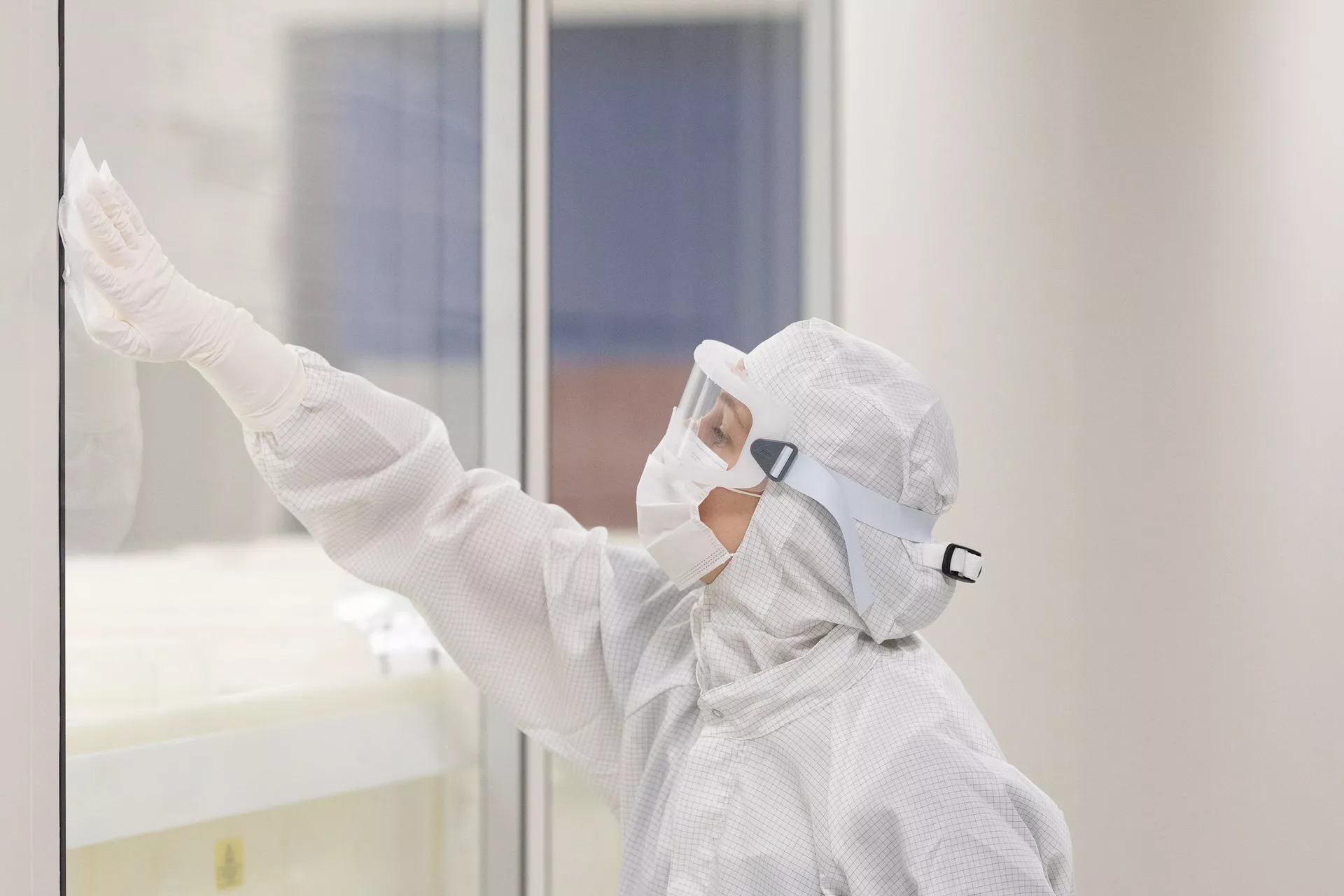The five biggest pitfalls in cleanroom cleaning
Consultancy Critical cleaning TRU academy
Ensuring the safety of your team, the quality of your products, and your image as a reputable organization is crucial. A contaminated cleanroom could jeopardize all of this, which is why it's important to adopt strict cleaning protocols.
Cleanroom cleaning is a complex task; mistakes are easy to make and hard to correct. As specialists in the field, we've summarized the five most common pitfalls of cleanroom cleaning. If you recognize any of these in your own company, it's time to take action!

1. Taking the wrong approach
Cleanroom cleaners spend 99% of their time removing invisible contaminants. The right cleaning techniques are crucial to achieving a spotless cleanroom. If your employees are not adequately trained in the right methods and techniques, (invisible) dirt and contaminants can accumulate, allowing stubborn bacteria and spores to grow.
2. Employing the wrong people
Unlike general office cleaning, cleanroom cleaning requires precision and accuracy. Using the wrong people for this complex task can result in dissatisfaction and inefficiency. As Aristotle once said: pleasure in the job puts perfection in the work.
3. Focusing too much on disinfection
While disinfection is crucial, it isn’t the only step in cleanroom cleaning. Thorough cleaning to remove dirt is the first and most critical step; disinfecting the room is the finishing touch. The same applies to hand hygiene: washing your hands with soap removes a lot more dirt and bacteria than a hand sanitizer ever could.
4. Using the wrong materials
Is doing something really better than doing nothing? Not always. In fact, using the wrong products and tools can lead to more contamination. Substandard materials, such as unsterile cloths and low-quality mops, leave behind particles in the cleanroom, exacerbating the problem. Harsh cleaning products can also have the opposite effect by leaving behind a residue on surfaces and thereby creating an environment in which microorganisms can thrive.
5. Underestimating the gowning procedure
Clothing acts as a filter to prevent microbes on the skin from entering the cleanroom. Successful cleanroom gowning depends on several factors, such as the cleanliness of the changing area, the efficiency of the logistics process, the changing method itself, and whether clothing items are being reused. The right procedure can significantly impact the number of contaminants in a cleanroom, which is why you should never underestimate the importance of good training and certification.
How does TRU turn these challenges into strengths?
As an industry expert, we recognize the potential pitfalls associated with cleanroom cleaning. To address these issues, we:
- actively seek and deploy people with the right qualifications
- thoroughly train all employees
- tailor our tasks to our clients, their products and their materials
These measures ensure that cleanroom cleaners operate according to the highest standards.
Do you want to avoid these common pitfalls in cleanroom cleaning? Request an obligation-free consultation and discover what TRU can do for you. After all, peace of mind is worth every effort!



